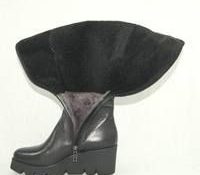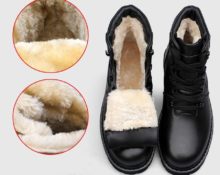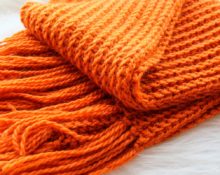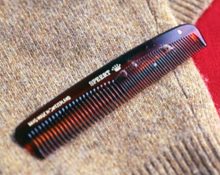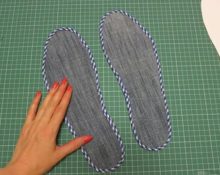One of the latest developments in the shoe industry is shoes made of wool fur. This material is a successful combination of natural and synthetic raw materials, providing comfort and practicality of shoes for winter.
When is wool used in shoes?
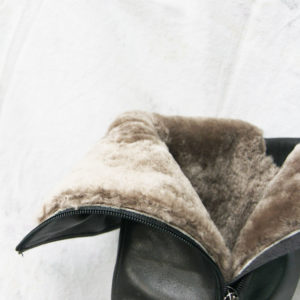 The material is good when there is no need to use natural fur shoes and it is possible to avoid artificial ones. For example, in humid weather conditions, which are detrimental to natural hair and contribute to the “greenhouse effect” in artificial shoes.
The material is good when there is no need to use natural fur shoes and it is possible to avoid artificial ones. For example, in humid weather conditions, which are detrimental to natural hair and contribute to the “greenhouse effect” in artificial shoes.
If it is assumed that the pair of boots will be the only one, it is also unwise to choose fur - it will not have time to dry. Wool in shoes is optimal if it is not possible to change shoes in a warm room (for example, students do not use a “shift”, and classes last from morning to evening).
These boots are also good for motorists.
Composition and thermal insulation characteristics of the material
Wool fur is made up of more than three-quarters sheep's wool, and only about twenty percent of the fibers used are synthetic. All this is attached to a “breathable” textile base. This combination provides:
 hygroscopicity due to the porosity of sheep wool fibers - your feet will be dry;
hygroscopicity due to the porosity of sheep wool fibers - your feet will be dry;- wear resistance;
- light weight and compact volume;
- reduced price compared to fur.
All this convenience and elegance is almost as good as natural fur in its ability to store heat. The special properties of tsigeika are also preserved: sheared wool contains lanolin. This natural antiseptic, activated at body temperature, has a therapeutic effect. Unless, of course, you are allergic!
Having chosen boots with woolen fur, stock up on a pair of fur insoles in case of cold weather.
Wool and fur: what are the differences?
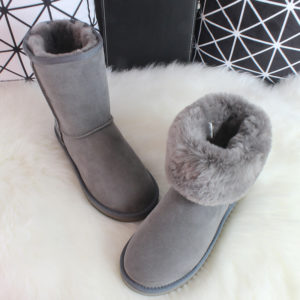 Natural fur retains all the characteristics of the skin (in shoes this is most often sheepskin) - the base remains “native”, the pile is not processed. Wool is obtained as a result of a long process: the cover sheared from a sheep becomes the material for yarn, which can be added and “foreign” additives by mixing the fibers.
Natural fur retains all the characteristics of the skin (in shoes this is most often sheepskin) - the base remains “native”, the pile is not processed. Wool is obtained as a result of a long process: the cover sheared from a sheep becomes the material for yarn, which can be added and “foreign” additives by mixing the fibers.
Both materials allow you to create a warming effect without excess breathability - otherwise your feet will freeze. The difference in resistance to wear is also small: natural fur, being a thicker material, wears down more slowly, but is wiped out faster. On average, a pair of fur and wool shoes will last the same amount of time - about three years.
“Wool” boots are less difficult to care for than fur boots; They will also more easily bear the costs of urban winter - dirt in public transport and “salted sidewalks.”
What is better - fur or wool?
Recognizing all the advantages of wool, one must understand that textiles will wear out faster than natural flesh, and it is easier to survive severe cold in fur boots equipped with an additional layer of leather. If frosts below fifteen degrees are expected, shoes with sheepskin inside are definitely better than fibers placed on the fabric, even thick and high quality!
Any type of winter shoe should fit freely on the foot, having a reserve - not under the sock, but under a layer of air.
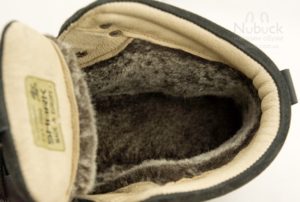 However, both fur and wool need to be dried, and if the latter dries in a heated room in ten hours, then a fur pair will need twice as much time. It is not recommended to use heating devices for drying - the skin will dry out.
However, both fur and wool need to be dried, and if the latter dries in a heated room in ten hours, then a fur pair will need twice as much time. It is not recommended to use heating devices for drying - the skin will dry out.
When choosing, lifestyle features are taken into account: having the opportunity to get to your destination at a brisk pace in about twenty minutes, you can get by with woolen shoes. If you happen to spend a long time in the cold without moving, it is better to stock up on a fur pair.
When choosing fur, take care of a replacement option. This is all the more necessary if real frosts are frequent in your region - it makes sense to get high boots or felt boots.
What is printed and blended wool?
Understanding the features of the chosen pair, you need to be able to distinguish printed fur from combined fur. Printed differs from natural:
 a textile base into which the fibers are woven like a carpet;
a textile base into which the fibers are woven like a carpet;- The wool used is combined with synthetic materials or with the hair of other animals (goats or dogs, which provides an additional therapeutic effect).
Combined fur is a combination of different materials: for example, on the foot the fur can be natural, on the boot it can be artificial, or it will have a textile lining instead of fur. Convenient and practical: the lower leg is compactly packed, and the foot is warm.
To avoid buying printed fur instead of natural fur, take a closer look at its base, spreading the fibers apart. Is the structure uniform and reminiscent of the interweaving of textile threads? This is a printed material - a natural one would have a finer undercoat.


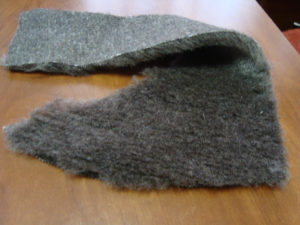 hygroscopicity due to the porosity of sheep wool fibers - your feet will be dry;
hygroscopicity due to the porosity of sheep wool fibers - your feet will be dry;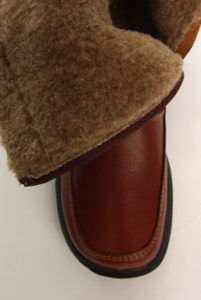 a textile base into which the fibers are woven like a carpet;
a textile base into which the fibers are woven like a carpet; 0
0